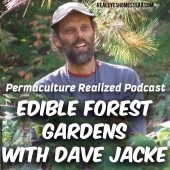




find religion! church
kiva! hyvä! iloinen! pikkumaatila
get stung! beehives
be hospitable! host-a-hive
be antisocial! facespace





Furthering Permaculture next to Lake Ontario.
www.oswego.edu/permaculture





find religion! church
kiva! hyvä! iloinen! pikkumaatila
get stung! beehives
be hospitable! host-a-hive
be antisocial! facespace




Furthering Permaculture next to Lake Ontario.
www.oswego.edu/permaculture




Life that has a meaning wouldn't ask for its meaning. - Theodor W. Adorno

 1
1




Dunkelheit wrote:
I did not know that coppicing was widely unknown to north americans. Fascinating! I coppice my forest in Germany for firewood. I use mainly beech, birch, maple and oak there.
 We just recently stopped playing cowboys and Indians and still think that ecosystems don't involve people. Jacke is still way ahead of the mainstream, and most people burn timber for fuel, and buy wattles from China.
We just recently stopped playing cowboys and Indians and still think that ecosystems don't involve people. Jacke is still way ahead of the mainstream, and most people burn timber for fuel, and buy wattles from China.Paul Cereghino- Ecosystem Guild
Maritime Temperate Coniferous Rainforest - Mild Wet Winter, Dry Summer




 In Germany and France, where I live most of the time, coppicing is a mainly forgotten practice. Biodiverstiy is in rushing decline here because of that. Nobody seems to care. They still think sprouce monocultures are great in areas where normally beech and oaks grow. Stupid, stupid people.
In Germany and France, where I live most of the time, coppicing is a mainly forgotten practice. Biodiverstiy is in rushing decline here because of that. Nobody seems to care. They still think sprouce monocultures are great in areas where normally beech and oaks grow. Stupid, stupid people.Life that has a meaning wouldn't ask for its meaning. - Theodor W. Adorno




Brenda
Bloom where you are planted.
http://restfultrailsfoodforestgarden.blogspot.com/




Life that has a meaning wouldn't ask for its meaning. - Theodor W. Adorno









find religion! church
kiva! hyvä! iloinen! pikkumaatila
get stung! beehives
be hospitable! host-a-hive
be antisocial! facespace




Brenda
Bloom where you are planted.
http://restfultrailsfoodforestgarden.blogspot.com/




















Why work hard when god made so many mongongo nuts? - !Kung
The notion that man must dominate nature emerges directly from the domination of man by man - Murray Bookchin
C'est drôle comme les gens qui se croient instruits éprouvent le besoin de faire chier le monde.-Boris Vian
El hombre es la naturaleza que toma conciencia de sí misma -Elisée Reclus
















Success has a Thousand Fathers , Failure is an Orphan
LOOK AT THE " SIMILAR THREADS " BELOW !










Success has a Thousand Fathers , Failure is an Orphan
LOOK AT THE " SIMILAR THREADS " BELOW !




My project thread
Agriculture collects solar energy two-dimensionally; but silviculture collects it three dimensionally.










Success has a Thousand Fathers , Failure is an Orphan
LOOK AT THE " SIMILAR THREADS " BELOW !




Lucas Harrison-Zdenek wrote:I am starting to gain interest in coppice for RMH purposes. Are there any species that refuse to coppice to anyone's knowledge?
All broadleaves coppice but some are stronger than others. The strongest are ash, hazel, oak, sweet chestnut and lime whilst the weakest include beech, wild cherry and poplar. Most conifers do not coppice.
My project thread
Agriculture collects solar energy two-dimensionally; but silviculture collects it three dimensionally.

|
Note to self: don't get into a fist fight with a cactus. Command this tiny ad to do it:
12 DVDs bundle
https://permies.com/wiki/269050/DVDs-bundle
|

